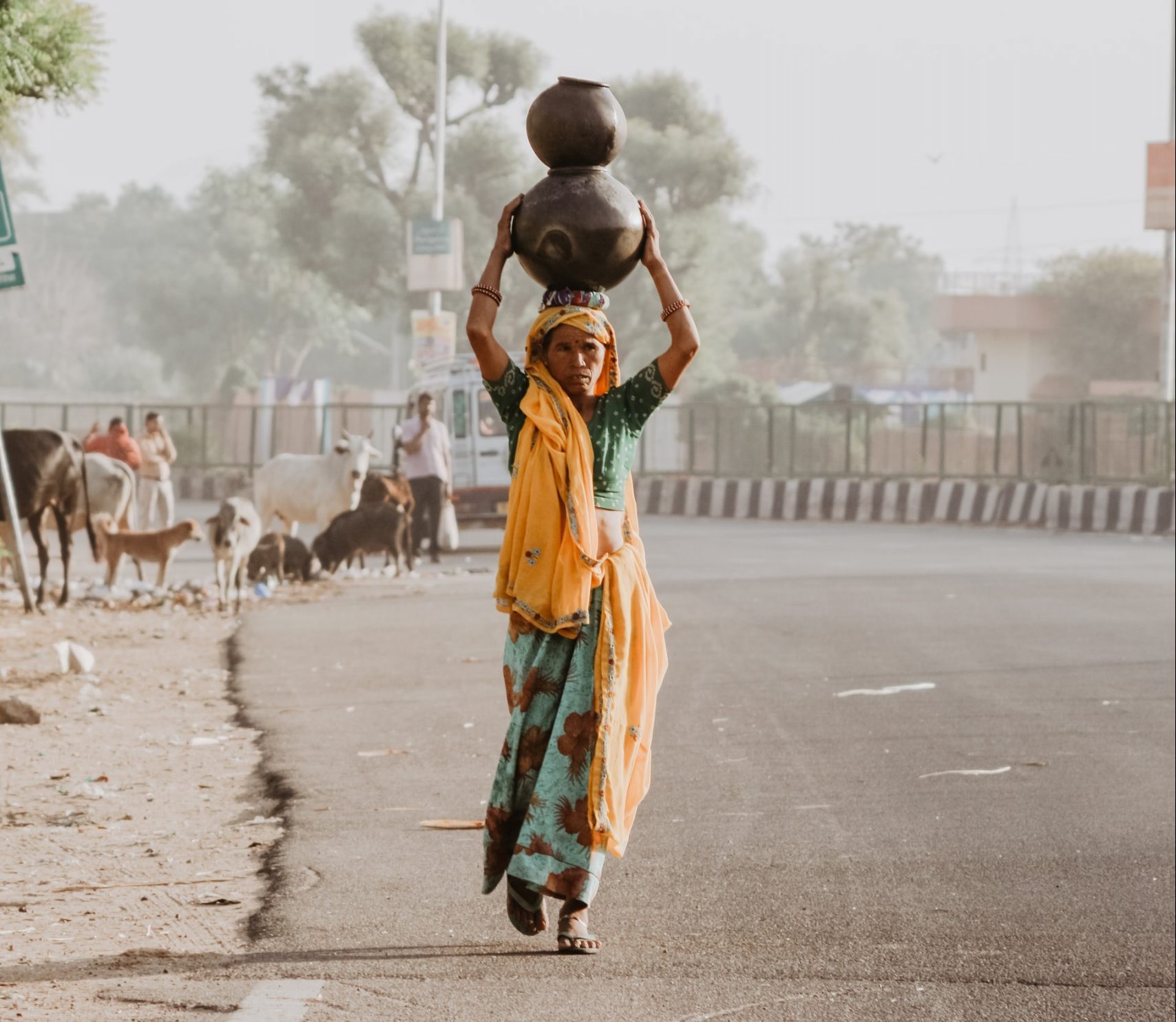
Photo by Ibrahim Rifath on Unsplash
This blog post is adapted from a presentation given by IWRAW Asia Pacific programme officer Marisa Hutchinson at Oxfam’s Mekong Water Resources Governance Program’s virtual webinar on Feminism in Water Governance held in June 2021.
Access to water is and will always be a feminist issue
At the Global South Women’s Forum 2021, Sim Socheata (Mekong Regional Water Governance Programme, Oxfam in Cambodia) shared that poor management and governance of water resources are directly responsible for increasing water scarcity. This adversely affects vulnerable groups such as Indigenous women, and the impacts go far beyond access to water itself. Due to the lack of access to resources, they become economically dependent on their spouses, consequently reducing their bargaining power in the family.
Their experiences are not isolated cases.
In Malaysia, Indigenous people, locally known as Orang Asli, from the Temuan tribe are being displaced from their homes and ancestral lands due to the construction of a large-scale water dam.
The lack of such a basic necessity also underscores the intersection of marginalisation and denial of access to rights. In sub-Saharan Africa, water scarcity and the lack of guaranteed access to clean water contribute to rising levels of period poverty among young girls who, due to a lack of sanitary products, do not attend school.
Ensuring accountability in water governance
For contemporary water governance systems to operate with a feminist framework, we have to interrogate existing systems which have historically excluded women and other marginalised communities from decision-making processes. The lack of their involvement and the failure to take into account their lived experiences results in policies, plans and projects being developed with a bias.
These mechanisms then risk not only promoting discrimination within the existing systems of water governance, but also endangering the livelihoods of women and other marginalised communities.
Considering that decisions are being made about framing, supply and demand, and that these decisions can impact the fairness and sustainability of water allocation, it is essential that women’s representation and social inclusion are present in water governance. Only a feminist water governance framework can ensure that no person is denied equitable access to the basic human right to, and need, for water.
Integration of a feminist approach into the water governance process can be achieved through:
- incorporating gender in the legislation, policies, and strategies of organisations;
- actively involving women in planning and decision making at all levels; and
- involving women in the construction of physical infrastructure, its management, operations, regulation and distribution of water.
Existing water governance systems are multiscaled and multileveled, which is why feminist water governance cannot be achieved by simply ‘hiring more women’. What needs to be done instead is an institutional reshuffling of the current systems in place which ensures that women are involved and participating at every level of governance, management, execution and outreach.
Integration of feminist concepts such as inclusivity, intersectionality, accountability and transparency are crucial in building a just mechanism. Thus, in envisioning feminism in water governance, we always have to ask: Who is at the table discussing water governance? How is accountability ensured to different communities and what are they accountable for? What or where is the evidence collected for decision-making? What is the process and basis for these decisions? How are these decisions communicated?
What can ‘intentional’ feminism in water governance ensure?
- Protection of those most marginalised and those impacted by weak policies, exclusionary decision-making processes and economic development projects
- Inclusive confrontation of institutional patriarchy in policies and processes
- Implementation of gender-just, inclusive policies that centre the rights and lives of women, girls and marginalised communities
- Building the capacity of women and other communities to influence decision-making and solution conversations at the local, regional and global level and to raise awareness of the discrimination against these communities
- Dispersal of resources with the needs of women and marginalised communities in mind
- A holistic approach to and intersectional analysis of the impacts of extreme climate events and hydropower development projects on the livelihoods of women, girls and marginalised communities
- Building strong, ambitious, resilient communities
However, attempts at building a water governance system around feminist values are not without their own set of challenges.
The invisibility of women’s work and responsibility related to the water sector is a huge challenge that can only be effectively addressed and solved through multi-stakeholder involvement. Civil society organisation (CSO) engagement is simply not enough unless other stakeholders such as the government and private sector take active measures to integrate women’s meaningful – and not tokenistic – involvement into water governance.
What is missing, and extremely necessary, in the current system of water governance is accountability at all levels. Such a form of accountability can only be acquired through building community capacity and knowledge on impacts, safety and security, and what accountability should and can look like with women and communities at the forefront.
Again, the main solutions entail women’s participation and leadership and social inclusion of communities – but how do we get communities there?
In some cases, it appears that women are being asked to pull themselves up by their bootstraps and get into water governance without clear ideas or plans for advocacy that will contribute to changing the very institutional and structural barriers that exclude them. There is no indication of what exactly needs to be done to strengthen the understanding of women and other vulnerable communities about the macro issues that affect water management and allocation specifically at their level. Hence, mobilising for advocacy seems to still be limited. So what can women’s agency and advocacy towards influence and impact look like?
How do we move forward from here?
It’s good that we are collectively working on a feminist and gendered approach to water governance. In doing so, we must also make sure that our analysis and approach is not disconnected from the reality on the ground.
At this stage, all issues and sites of marginalisation, and their impacts, have been exacerbated during the COVID-19 pandemic. Hence, collective and intersectional approaches and solutions are required.
We cannot and must not allow water governance to continue with patriarchal and hegemonic structures which actively threaten the livelihoods of women and other marginalised communities. The work towards reshaping water governance using a feminist framework has to begin on the ground with ensuring the inclusion and support of all women of all identities, realities and issues across all capacity- and knowledge-building initiatives at the community level.
It is time for water governance to be reclaimed by women, and actively reconstructed through a community-centred lens. Only then can we eradicate a system that denies the most crucial source of life to the most vulnerable. With feminism at the forefront comes hope for a world where water is no longer a privilege, but a right.

